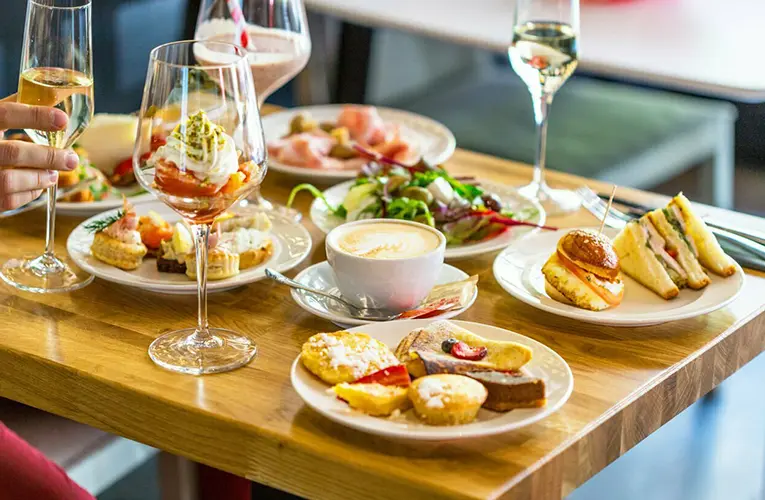“Flavorful Fusion: Exploring Global Cuisine with a Modern Twist”
### “Flavorful Fusion: Exploring Global Cuisine with a Modern Twist”
The world of culinary arts is continuously evolving, blending traditional flavors and techniques with innovative approaches. Fusion cuisine, which combines elements from various culinary traditions, has become a popular trend in modern gastronomy. This guide explores how to creatively merge global ingredients and cooking styles to craft exciting and unique dishes that honor diverse culinary heritages while introducing fresh, contemporary twists.
—
### 1. The Concept of Fusion Cuisine
– **Definition:**
– **Fusion Cuisine:** The practice of blending ingredients, techniques, and flavors from different cultural cuisines to create new, innovative dishes.
– **Historical Context:**
– Fusion cuisine emerged as a result of globalization, travel, and cultural exchange. It combines traditional elements with contemporary techniques to reflect the dynamic nature of modern food culture.
– **Purpose:**
– **Creativity:** To explore new flavor combinations and cooking techniques.
– **Inclusivity:** To make global flavors accessible to a wider audience.
– **Adaptability:** To adapt traditional dishes to modern tastes and dietary preferences.
—
### 2. Core Elements of Fusion Cuisine
– **Ingredients:**
– **Global Staples:** Ingredients such as lemongrass, chipotle peppers, and miso offer a range of flavors and textures from different cuisines.
– **Seasonal and Local:** Integrate globally inspired ingredients with local, seasonal produce to enhance freshness and sustainability.
– **Techniques:**
– **Traditional Techniques:** Techniques like stir-frying, grilling, and braising from various cultures can be used in fusion cooking.
– **Modern Techniques:** Incorporate modern methods such as sous-vide, molecular gastronomy, and fermentation for innovative textures and flavors.
– **Flavor Profiles:**
– **Layering Flavors:** Combine complementary flavors, like sweet and spicy, or tangy and umami, to create complex and balanced dishes.
– **Balancing Act:** Ensure the fusion dish maintains harmony between the different culinary elements.
—
### 3. Classic Fusion Dishes with a Modern Twist
– **Korean BBQ Tacos:**
– **Ingredients:** Korean-style marinated beef (bulgogi), kimchi, pickled daikon, and spicy mayo.
– **Technique:** Grill the beef and assemble it in tortillas with traditional Korean toppings for a fusion of Korean and Mexican flavors.
– **Sushi Burrito:**
– **Ingredients:** Sushi rice, raw fish (like tuna or salmon), avocado, cucumber, and sriracha aioli.
– **Technique:** Roll sushi ingredients in a large seaweed wrap to create a handheld fusion of Japanese sushi and Mexican burrito.
– **Italian Pasta with Thai Red Curry:**
– **Ingredients:** Spaghetti, Thai red curry paste, coconut milk, and basil.
– **Technique:** Toss cooked pasta with a creamy Thai curry sauce for an Italian dish with a Thai twist.
– **Churros with Matcha Dip:**
– **Ingredients:** Traditional churro dough, matcha powder, and sugar.
– **Technique:** Fry churros until crispy and serve them with a sweet, creamy matcha dipping sauce for a unique fusion dessert.
—
### 4. Ingredients to Experiment With
– **Herbs and Spices:**
– **Indian Spices:** Such as cumin, coriander, and turmeric.
– **Middle Eastern Spices:** Like sumac, za’atar, and saffron.
– **Condiments and Sauces:**
– **Asian Sauces:** Soy sauce, hoisin sauce, and fish sauce.
– **Latin Sauces:** Salsa verde, chimichurri, and mole.
– **Proteins and Vegetables:**
– **Proteins:** Tofu, tempeh, and duck.
– **Vegetables:** Jicama, lotus root, and chayote.
—
### 5. Techniques for Successful Fusion Cooking
– **Research and Respect:**
– **Cultural Sensitivity:** Understand and respect the origins of the ingredients and techniques used. Avoid cultural appropriation by honoring the traditions of the cuisines being fused.
– **Experimentation:**
– **Trial and Error:** Test different combinations of ingredients and techniques to find what works best together.
– **Small Batches:** Start with small quantities to fine-tune flavors and ensure balance.
– **Presentation:**
– **Visual Appeal:** Use modern plating techniques to enhance the visual presentation of fusion dishes.
– **Cultural Elements:** Include elements from the different cuisines represented in the dish to create a visually and culturally cohesive presentation.
—
### 6. Examples of Global Fusion Cuisine
– **Nikkei Cuisine (Japanese-Peruvian Fusion):**
– **Examples:** Sushi with ceviche toppings, miso-marinated seafood with Peruvian potatoes.
– **Southern Indian-American Fusion:**
– **Examples:** Curry-flavored fried chicken, sweet potato and chickpea curry.
– **Mexican-Mediterranean Fusion:**
– **Examples:** Tzatziki-topped tacos, quinoa-stuffed poblano peppers.
—
### 7. Tips for Home Cooks
– **Start Simple:**
– Begin by adding a few fusion elements to familiar dishes to build confidence and develop your palate.
– **Stay Informed:**
– Follow food blogs, watch cooking shows, and attend culinary classes to stay updated on fusion trends and techniques.
– **Be Creative:**
– Don’t be afraid to innovate and experiment with new combinations of ingredients and techniques.
—
### 8. Future Trends in Fusion Cuisine
– **Health-Conscious Fusion:**
– **Trend:** Integrating healthier ingredients and cooking methods to cater to growing health-conscious consumers.
– **Sustainability Focus:**
– **Trend:** Using sustainable ingredients and practices in fusion cooking to address environmental concerns.
– **Technological Integration:**
– **Trend:** Employing advanced cooking technologies and tools to create innovative fusion dishes with enhanced textures and flavors.
—
### 9. Conclusion
– **Summary of Key Points:**
– Fusion cuisine creatively combines global ingredients and techniques to produce innovative dishes that respect traditional culinary practices while embracing modern tastes.
– **Encouragement:**
– Explore and experiment with fusion cuisine, using this guide as a starting point to create unique and flavorful dishes.
– **Call to Action:**
– Start cooking with a fusion approach, share your creations, and continue exploring the diverse world of global flavors with a modern twist.
—
This guide provides a comprehensive overview of how to explore and create fusion cuisine, offering practical tips, examples, and inspiration for blending global culinary traditions with contemporary twists.










